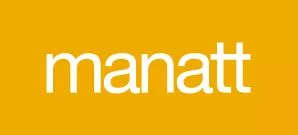Introduction
Five months into the unwinding of the federal Medicaid continuous coverage requirement, states continue to work through an unprecedented volume of eligibility and enrollment actions, while also contending with growing workforce constraints. Medicaid and Children's Health Insurance Program (CHIP) enrollees, for the first time since March 2020, are being asked to act to maintain health coverage (e.g., updating contact information, filling out a renewal form/responding to requests for information if unable to be renewed on an ex parte basis). Almost half of Medicaid enrollees report that it is their first time ever going through the renewal process; and, even individuals familiar with the process may find renewal forms and other notices confusing. Medicaid, CHIP, Marketplace and integrated human services1 call centers are experiencing a surge in the number of callers seeking information about their health coverage (e.g., how to reset passwords for online accounts, case status inquiries, requests to re-enroll after termination).
In some states, high call volume is translating to long wait times and high rates of call abandonment, adversely affecting Medicaid and CHIP enrollees who rely on the call center as a critical source of assistance and support. According to the Kaiser Family Foundation, individuals enrolled in Medicaid prefer multiple modalities of communication—including telephone. When call centers fail to function well, there is heightened risk of inappropriate coverage loss, particularly among Black, Latino/a, and other people of color who are disproportionately represented among those due to renew and who may be in jeopardy of losing access to coverage and care. Federal funding is also on the line: the ability for enrollees to submit renewals telephonically is a federal requirement.2 States unable to offer this point of renewal access to consumers could face corrective action and financial penalties, pursuant the Consolidated Appropriations Act, 2023.3 There is no simple solution to providing optimal call center performance, but workforce challenges are exacerbating states' challenges during unwinding.
Recognizing the crucial role of call centers in supporting enrollees throughout the eligibility and enrollment process, states can use this toolkit to identify opportunities and explore strategies to improve call center functionality. Investments in call center capacity will support unwinding and long-term call center performance improvement, thereby reducing the burden on state staff and mitigating inappropriate coverage losses among Medicaid and CHIP enrollees.
| # | Call Center Strategies |
| 1.0 Workforce | |
| 1.1 | Transform the role into a profession to attract and retain call center staff. Efforts could include offering increased wages, changing the compensation structure from hourly wage to fixed salary, rebranding the job description, and providing advancement opportunities. |
| 1.2 | Offer financial incentivizes and job flexibility to help with attrition (e.g., bonus for every three months of employment, tenure-based raises, remote work, part-time scheduling). |
| 1.3 |
Address staffing constraints by:
|
| 1.4 | Evaluate whether to outsource the call center to a vendor (for consideration in the long-term, or short-term if the state has an emergency or sole source procurement pathway). States may outsource entirely (i.e., the telephony technology, oversight and staffing) or outsource specific components of the call center |
| 1.5 |
Build levers into the contracting and procurement process to hold vendors/contractors accountable. For example, states can incorporate into contracts/contract amendments, request for proposals or information, purchasing orders, and memorandums of understanding:
|
| 2.0 Training and Education | |
| 2.1 | Upskill state call center staff and contractors to provide assistance commensurate to the support provided by eligibility specialists (e.g., to help with data entry, obtain verification—recognizing that, in some states, contractors may not be able to make a final determination of eligibility). |
| 2.2 | Streamline, standardize, and expedite training modules so that call center staff are operational as quickly as possible. (For states with integrated systems: revamp training to match specific modules with certain roles and modify or reduce training time for topics that are unnecessary for such roles.) |
| 2.3 |
Update call center training resources, guides, scripts, and frequently asked questions (FAQs) to ensure call center staff are:
|
| 2.4 |
Improve and expand member education on common consumer support topics by:
|
| 2.5 | Promote and educate Navigators, assisters, community-based organizations, and members about other sources of support (e.g., portals, chatbots, mobile apps) in addition to the call center. |
| 3.0 Process Improvements | |
| 3.1 | Review data on call volume by reason code to identify call drivers and target strategies accordingly (e.g., enable people to reset passwords without having to call if a high volume of calls are related to password reset, modify IVR menu options, develop new FAQs to answer common questions). |
| 3.2 | Implement direct dial options or update menu options—including in other languages—to route callers to the appropriate line, dedicated lines, or away from lines with high wait times. (For states with integrated systems: segment Medicaid-only lines from lines that handle joint Medicaid and other human services questions/issues.) |
| 3.2 | Extend call center hours to provide additional support to callers (particularly on nights and weekends). |
| 3.4 | Provide callers the option to receive a callback when on hold. This could include a feature to eliminate the number of calls in the queue by only allowing one place in line per caller ("Hold My Place"), assuming the state can guarantee a callback. |
| 3.5 |
Share information with callers when on hold, such as:
|
| 3.6 | Minimize the personal information requested from callers required to obtain assistance through the call center (e.g., social security numbers). |
| 4.0 Technological Improvements | |
| 4.1 | Leverage IVR capabilities (e.g., to triage calls and manage referral volume by updating menu options; enable callers to check redetermination/application status, change passwords, update contact information; respond to simple questions). Note, however, that IVR is not a replacement for assistance from a customer service representative; callers need to be able to readily access customer service representatives. (For states with integrated systems: utilize IVR for SNAP/Temporary Assistance for Needy Families (TANF)-specific requests—e.g., to enable callers to obtain information on balance, transaction history, interviews, etc.). |
| 4.2 | Utilize member portals (e.g., to enable authorized representatives to assist consumers, enable consumers to track application status). Note, however, that portals and other technologies are not replacements for assistance through the call center. Missouri recently launched a new portal to help the state's Medicaid enrollees access important updates about their benefits, submit information, and find out about renewal timelines. (For states with integrated systems: also address SNAP/ TANF questions through the portal.) |
| 4.3 | Explore other technological innovations (e.g., mobile app, chatbot, portal tracking tools or "pizza trackers") to address common and simple questions (e.g., password reset, case status inquiries, document requests) and enable enrollees to track application and renewal status. Arizona, for example, created a live chat feature to answer enrollee questions about renewals and reduce the burden on state workforce. (For states with integrated systems: address SNAP/ TANF questions and enable tracking of SNAP recertifications/other activities through technological innovations.) |
Footnotes
1. States with integrated human services systems have unique challenges, as call center staff need to be well-versed in multiple program's eligibility requirements and renewal processes.
2. States are also federally required to ensure that enrollees can return the signed renewal form through all available modalities—online, in-person, by mail, and by telephone. See 42 CFR 435.907 and State Health & Value Strategies (SHVS)/Manatt Health, Ensuring Compliance With Federal Renewal Requirements: State Diagnostic Assessment Tool.
3. Related penalties could include suspension of procedural terminations and/or civil monetary penalties up to $100,000 per day if CMS determines that a state has failed to submit or implement its corrective action plan.
4. Integrated systems refers to integrated human services systems, such as SNAP or TANF.
5. Managed care plans must limit their renewal form assistance to completing fields in the renewal forms with information provided by the enrollee, excluding any fields associated with managed care plan selection or the enrollee's signature. Managed care plans must not provide choice counseling (defined at 42 CFR § 438.2) services to their enrollees.
Originally published by State Health and Value Strategies.
The content of this article is intended to provide a general guide to the subject matter. Specialist advice should be sought about your specific circumstances.




